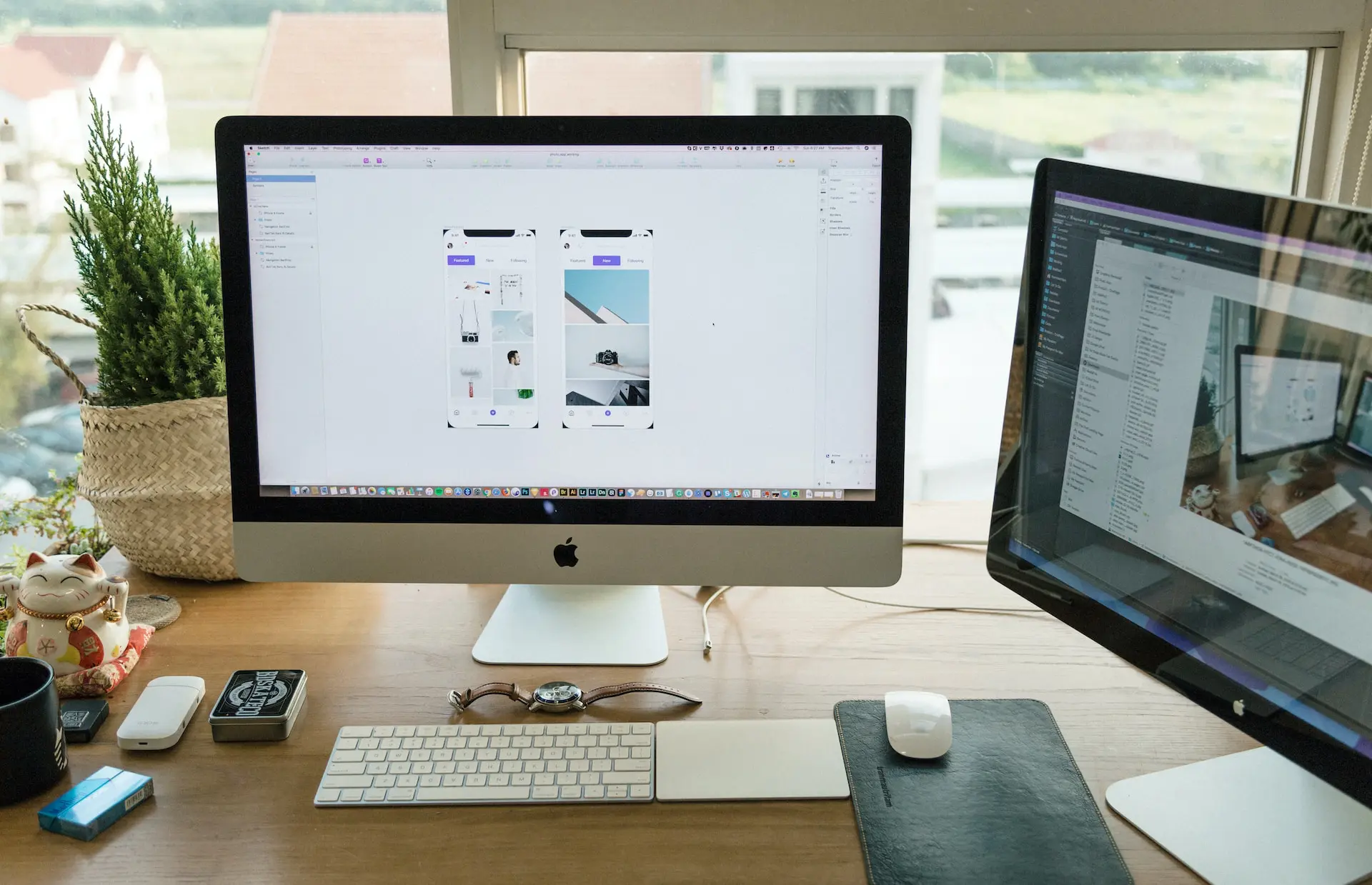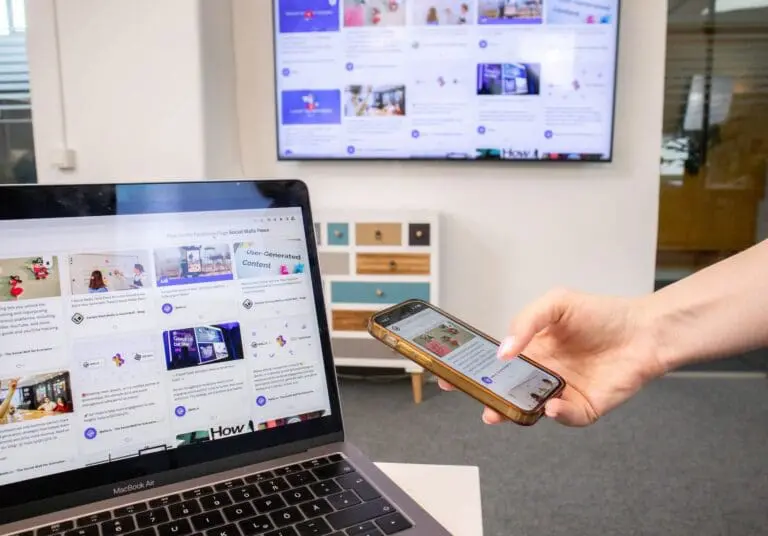Design
Introduction to User-Centered UI/UX Design for WordPress Websites
Navigating the vast digital landscape might sometimes feel like you’re lost without a map. But with User-Centered Design for WordPress Websites, you’re not just given a map, but a compass and a friendly guide, too. It’s all about crafting spaces that feel intuitive, inviting, and truly made for the user. The right design feels like a conversation, understanding and anticipating a user’s needs even before they do. And when it comes to WordPress, one of the world’s most versatile platforms, integrating these user-centered principles becomes all the more crucial. At heyreliable.com, we’re passionate about this approach, ensuring every project we take on resonates with that sense of genuine connection and understanding.

Now, UI and UX might sound like tech jargon, but in reality, they’re the heartbeat of a great website. Think of UI as the aesthetic elements – the colors, the graphics, and the layout. It’s what makes your website visually appealing. On the other hand, UX delves into how a visitor interacts with your website, ensuring they can navigate easily, find the information they’re seeking, and perhaps even enjoy their time browsing.
When these two join forces in harmony, you get a website that doesn’t just look good but feels right. It’s about creating a digital environment where every visitor feels like the website was tailor-made for them. And isn’t that a beautiful thought?
At heyreliable.com, we believe in the transformative power of a genuinely user-centric approach. It’s not just about aesthetics or functionality; it’s about crafting a connection, a digital handshake if you will. We understand that behind every click, there’s an individual with a story, a need, or a goal. And with this understanding, we strive to create experiences that resonate, that make every individual feel heard and valued.
Understanding UI/UX Design
When venturing into the digital landscape, you’ve probably come across the terms UI and UX more times than you can count. They’re like the buzzwords of the digital era, aren’t they? But let’s pull back the curtain and discover what these terms truly mean and why they’re so essential.
UI, or User Interface, is the visual aspect of your website. Imagine walking into a room: the color of the walls, the furniture layout, the artwork – all these form the room’s “interface.” In the same way, the colors, fonts, buttons, and images on a website make up its UI. It’s what gives your website its distinct look, its personality.
Now, while a room might look beautiful, what if the furniture is uncomfortable, or the lighting is too harsh? This is where UX, or User Experience, comes into play. UX focuses on how visitors interact with the elements of your website. It’s about ensuring that their journey through your site is smooth, intuitive, and enjoyable. It’s like ensuring the room not only looks inviting but feels comfortable too.
But why do these two elements matter so much? Well, think of your favorite café or store. It’s not just about the items they sell; it’s about how you feel when you’re there. The same principle applies to websites. A website can be visually stunning, but if visitors struggle to find what they’re looking for or get frustrated by slow load times, they’ll leave, and perhaps not return.
This is the philosophy we champion at heyreliable.com. We don’t just design websites; we craft experiences. We understand that a website is a bridge between you and your audience, and we aim to make crossing that bridge a pleasure for everyone involved.
The Vital Role of User-Centered Web Design
Ah, the vast digital ocean! It’s filled with millions of websites, each vying for attention. In this ever-evolving realm, what makes a website not just noticeable, but memorable? Enter the world of user-centered web design.
Imagine visiting a friend’s house. As soon as you enter, they’ve got your favorite drink ready, your preferred music playing, and they’ve prepared the very dish you’ve been craving. Feels special, right? That’s the essence of user-centered web design. It’s designing with the intention of making every visitor feel like the website was uniquely tailored for them.
User-centered design goes beyond just visual appeal. It’s about understanding. It’s about recognizing that every visitor arrives with a purpose, whether it’s seeking information, making a purchase, or simply exploring. Meeting their needs, anticipating their questions, and guiding them smoothly through their journey is what sets a user-centered website apart from the rest.
There’s a beautiful simplicity in focusing on the user. It’s about asking: “How can we make their experience better? How can we make their journey smoother?” It’s a way of showing care and respect. It tells your audience, “We value your time, we appreciate your visit, and we genuinely care about your experience.”
This principle of cherishing user experience is what we deeply value at heyreliable.com. We understand that in today’s digital age, a website isn’t just a collection of pages and links. It’s a space of interaction, a platform of connection, and a testament to a brand’s commitment to its audience.

Elements of User-Centered Design
When crafting a user-centered website, there’s more than meets the eye. It’s like cooking a dish: while the final presentation is vital, the ingredients and the process matter just as much. Let’s uncover the essential components that come together to make a website genuinely user-centered.
Understanding the audience
Imagine trying to write a heartfelt letter to someone you’ve never met. Pretty challenging, right? The first step in user-centered design is getting to know the audience. What are their preferences, their needs, their challenges? A deep understanding of the audience forms the foundation of a user-centered website. It’s like crafting that personalized letter, knowing it’ll resonate with its reader.
Emphasis on accessibility
Imagine a beautiful library with thousands of books, but the shelves are so high that most people can’t reach them. A user-centered website ensures that every feature, every piece of content, is accessible to everyone, regardless of their abilities or disabilities. It’s about ensuring that all visitors feel welcomed and valued.
Importance of feedback and iteration
In the world of design, there’s always room for improvement. And who better to guide that improvement than the users themselves? Regularly collecting feedback and continuously refining the website based on that feedback is like tuning a musical instrument, ensuring it always hits the right notes.
Maintaining design consistency
Consistency is comforting. Think about your favorite café. There’s a sense of familiarity each time you visit. Similarly, a user-centered website maintains consistency in its design elements, giving visitors a feeling of familiarity and reliability. It’s like visiting a place where you know you’ll always feel at home.
In our endeavors at heyreliable.com, these principles are not just guidelines but commitments. We view every website as an ongoing conversation between the brand and its audience. Through our hand-crafted designs, we ensure this conversation is always warm, welcoming, and meaningful.
Creating a User-Centered Website: The Thought Process
Designing a user-centered website is a bit like hosting a party. You want to create an environment where each guest feels valued, understood, and catered to. It’s not just about having a great playlist or serving delicious food; it’s about paying attention to those little details that make everyone feel at home. So, how do we achieve this in the realm of web design?
First, empathy is key. When crafting a user-centered website, it’s essential to step into the shoes of the visitor. What are they hoping to find? How do they feel as they navigate each page? It’s about listening more than telling, understanding more than assuming.
Then comes the aspect of fluid navigation. Remember the last time you visited a new place and instinctively knew where everything was? That’s the feeling a well-designed website should evoke. Everything should be intuitively placed, making the visitor’s journey smooth and enjoyable.
Clarity is another cornerstone. In a world filled with information overload, clarity is like a breath of fresh air. A user-centered website ensures that the message is clear, concise, and easily digestible. It avoids jargon, opts for simple language, and makes sure that every piece of content adds value.
Lastly, there’s the aspect of genuine connection. It’s one thing to design a website that looks good and works well, but it’s a whole different ball game to craft a site that truly connects with its visitors. This means understanding their needs, anticipating their questions, and providing solutions before they even ask. It’s like being that attentive host who ensures every guest leaves with a smile.
At heyreliable.com, we put these principles into practice every day. We hand-code every site from scratch, ensuring it’s tailor-made for its audience. We don’t rely on shortcuts or one-size-fits-all solutions. Instead, we take the time to get to know each brand, its audience, and its goals. Because in the end, a website should be more than just a digital space; it should be a place of genuine connection.
From Concept to Reality: Crafting User-Centered Designs
Imagine being invited to a tailor. Instead of handing you a ready-made outfit, they spend time understanding your preferences, measuring every inch, and then crafting an outfit that feels like it was made just for you. This level of personalized care is what goes into creating a user-centered design.
The journey starts with a conversation. Before putting pen to paper or, in our case, code to screen, it’s vital to understand the story behind the brand, its aspirations, and most importantly, its audience. Each website has its unique tale to tell, and getting the narrative right is paramount.
Next is the challenge of translating ideas into design. It’s one thing to understand what’s needed, but bringing that vision to life is where the true magic lies. It’s about choosing colors that evoke the right emotions, structuring the site so it flows seamlessly, and ensuring every element, big or small, aligns with the brand’s essence.
Of course, no journey is without its bumps. Testing and refining are crucial steps in the design process. A site might look great, but how does it perform? Is it responsive? Does it load quickly? These practical aspects are just as vital as aesthetics. It’s like ensuring that beautiful outfit is also comfortable to wear.
Last but not least, comes the importance of ongoing evolution. The digital world is dynamic, with new trends emerging almost daily. A truly user-centered website isn’t static; it evolves, adapts, and grows, ensuring it remains relevant and engaging for its audience.
At heyreliable.com, this tailored approach is our commitment. Every website we craft is a labor of love, an outcome of countless conversations, revisions, and refinements. Because we believe that in the vast digital ocean, every brand deserves its unique space, crafted with care and precision.
Why User-Centered Design Makes All the Difference
Imagine walking into a room where everything feels just right. The lighting, the decor, the ambiance; it all seems tailor-made to make you feel at ease. That’s the essence of user-centered design in the digital space. It’s not just about aesthetics or functionality alone; it’s about crafting an experience that resonates with every visitor.
A genuine understanding of human behavior is at the heart of user-centered design. It’s about delving into the mindset of the users, discerning their needs, their aspirations, and even their apprehensions. By doing so, a bond is formed, creating a sense of trust and mutual respect between the brand and its audience.
In this realm, clarity and simplicity reign supreme. A user-centered website does away with the unnecessary, focusing on what truly matters. It’s like having a clear, open conversation without any distractions, ensuring that the core message is always front and center.
Now, you might wonder, why go through all this trouble? The answer is simple: connection. In an age where countless websites are vying for attention, standing out isn’t just about flashy graphics or innovative features. It’s about creating a space where users feel valued and understood. It’s about ensuring that every interaction, be it big or small, leaves a lasting positive impression.
At heyreliable.com, we’re more than just developers. We’re storytellers, problem-solvers, and most importantly, listeners. Every website we craft stems from a deep-rooted understanding of the brand’s ethos and its audience’s preferences. We hand-code from scratch, ensuring that the end result is not just a website but a reflection of the brand’s heart and soul.

Building Trust Through Transparent Web Design
Stepping into the vast world of the internet can sometimes feel like navigating a dense forest. With countless paths, directions, and potential pitfalls, finding a guide you trust is invaluable. That’s where user-centered design comes into play, acting as that trusted friend who walks alongside you, ensuring you’re always on the right track.
Transparency is the linchpin of trust. In web design, this means creating an environment where every click, every page, and every interaction feels honest and open. There’s no room for confusion, hidden agendas, or smoke and mirrors. It’s about laying everything out in the open, inviting users to explore with confidence.
A transparent website is one that prioritizes easy navigation. Like a well-laid-out map, it ensures users always know where they are, where they’re heading, and how to get there. It’s about eliminating guesswork, reducing friction, and paving the way for smooth journeys.
Beyond structure and navigation, transparency also extends to content. Every piece of information, every image, every testimonial – they all need to echo the same ethos of honesty. When users feel they’re getting the real deal, their trust in the brand deepens.
And trust, once earned, can do wonders. It transforms one-time visitors into loyal customers, casual browsers into brand ambassadors. In a digital space filled with fleeting interactions, trust ensures that connections are genuine and lasting.
At heyreliable.com, transparency isn’t just a buzzword. It’s a principle we live by. From our hand-coded designs that steer clear of shortcuts to our commitment to brands and their stories, we prioritize creating spaces that resonate with honesty and authenticity.
Wrapping Up
In the ever-expanding realm of the digital world, what truly stands the test of time is genuine connection. The kind where users don’t just see pixels and code, but feel the heartbeat of a brand. User-centered design is not a fleeting trend; it’s the sincere effort of designers and developers, like us at heyreliable.com, to understand, empathize, and ultimately cater to the very essence of human interaction.
Every website is an invitation, a digital handshake if you will, extended to visitors. By prioritizing clarity, honesty, and user-centric practices, we ensure that this handshake feels warm and welcoming. And in that moment of connection, brands flourish, stories get told, and the vast digital forest feels just a bit more like home.
Thank you for embarking on this exploration of UI/UX with us. Here’s to crafting digital experiences that truly matter, one pixel at a time.




